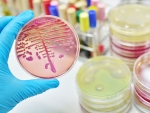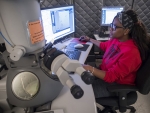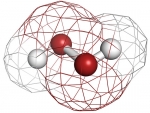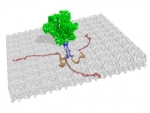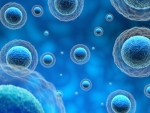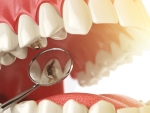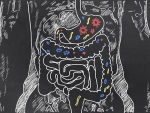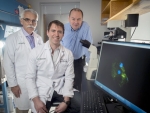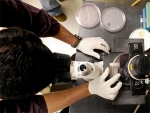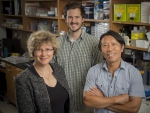Displaying items by tag: department of microbiology
Frances Lund highlighted the need to do drug trials where the concentrations of inflammatory diseases are highest — the Southeast.
Tagged under
In Rome, Frances Lund will talk about the need to do drug trials where the concentrations of chronic inflammatory diseases are highest — the Southeast.
Tagged under
Sidhanth Chandra and Gunnar Eastep honored by Barry M. Goldwater Scholarship and Excellence in Education Foundation.
Tagged under
Students from the inaugural class of the Undergraduate Immunology Program explain what attracted them to the major and UAB.
Tagged under
This advanced, direct electron detector will yield near-atomic resolution of macromolecules and 3-D tomography of cells or tissue slices.
Tagged under
Tagged under
This structure will further explain how the virus infects human cells and how progeny viruses are assembled, and it may be a point of attack to disarm the virus.
Tagged under
Researchers study the mechanisms that prevent autoimmune diseases like rheumatoid arthritis, systemic lupus erythematosus or multiple sclerosis after an infection.
Tagged under
Researchers have discovered the mechanism of this control, with implications for developmental biology, the immune response and cancer dysregulation.
The inhibitor blocks Streptococcus mutans from sticking on the tooth surface. About 2.3 billion people worldwide have tooth decay in their permanent teeth, primarily caused by this bacteria.
Tagged under
This is the first demonstration of donor microbes persisting in the recipient following fecal transplant, a finding made possible by a novel method to “fingerprint” individual strains of bacteria.
Tagged under
- release
- school of medicine
- center for clinical and translational science
- department of microbiology
- department of cell developmental and integrative biology
- department of medicine
- division of infectious diseases
- department of biostatistics
- school of public health
- department of genetics
- heflin center for genomic science
These scientifically diverse researchers deliver lectures at American Society for Microbiology Branch meetings throughout the United States.
Tagged under
UAB assays enabled the first genomewide association study of IgA1 O-glycosylation aberrancy in IgA nephropathy, a disease that frequently causes kidney failure.
Tagged under
Two new undergraduate programs — genetics and genomic sciences and immunology — are interdepartmental majors in the College of Arts and Sciences and School of Medicine.
Tagged under
Abnormal antibody production that allows inflammation leading to AIDS is detected by analysis of antibodies in gut fluid of HIV-1-infected people.
Tagged under
Three UAB researchers are among 391 nationwide to be recognized for their scientifically or socially distinguished efforts to advance science or its applications.
Tagged under
This study of cockroach-induced asthma and Enterobacter mirrors previous studies with fungus- and house dust mite-induced asthma, where neonatal vaccination with bacteria suppressed adult asthma.
Tagged under
Coating insulin-producing cell-clusters with a thin protective layers may be a way to modify and use pig tissue to ultimately treat human diabetes. Testing in mice is the next step.
Tagged under
This is the second potential diagnostic application for an investigational biomarker, and discussions are underway with industry partners to develop an assay from this UAB technology.
Tagged under


